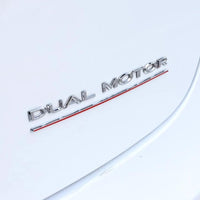Your Tesla Model Y's rear bumper may need to be removed for several reasons, such as maintenance, replacement, or personalization. We'll take you step-by-step through the process of taking off your Tesla Model Y's rear bumper in this blog post.

Equipment and Supplies You'll Require
Make sure you have the following supplies and tools before you start:
- Plastic Trim Tools: To protect the clips and bumper from harm.
- Screwdrivers: flathead and Phillips head varieties.
- A set of sockets with a range of sizes.
- Ratchet wrench: Used to unscrew nuts and bolts.
- For any specific screw, use a Torx bit.
- Gloves: To keep your grip and protect your hands.
- Safety glasses: To shield foreign objects from your eyes.
1. Procedure for Removal in Steps
1. Set Up Your Workspace
Locate a Secure Area:
- Level Surface: To guarantee stability during the removal process, park your Tesla Model Y on a level, level surface.
- Secure the Vehicle: To stop the car from rolling, apply the parking brake and think about using wheel chocks.
Cut the Battery (Selective):
- Safety Precaution: To prevent any electrical problems or unintentional activation of car equipment, you may decide to unplug the 12V battery for additional safety.
2. Take Off the Bottom Trim Panels
Find the Lower Trim Panels:
- Access Points: The lower trim panels can be fastened with screws or clips; they are situated beneath the rear bumper.
Take out the screws or clips:
- Plastic Trim Tools: To carefully peel the clips off without harming the trim or the surrounding regions, use plastic trim tools.
- Screwdriver: To remove any screws that may be present, use a screwdriver or socket wrench.
3. Undo the Bolts Holding the Wheel Well Liners
Getting to the Wheelwells:
- Find the Bolts: The bolts or screws that fasten the rear bumper to the car's body are located in the wheel wells.
Take out the bolts:
- Socket Set: To remove these bolts, use a ratchet wrench and socket of the proper size. For reinstallation, store them in a secure location.
4. Cut the Fasteners on the Rear Bumper
Find the Fasteners:
- Under the Bumper: The rear bumper's bottom border is lined with extra fasteners.
- Take out the fasteners: To remove these fasteners, use the proper instrument, such as a socket wrench or screwdriver. Watch out for any clips that might be securing the bumper as well.
5. Cut Off Electrical Wires
Find the Power Connectors:
- Electrical connectors for the rear lights and any sensors are located in the rear bumper.
Cut Off Connections:
- Press and Release: Separate the connectors by lightly pressing on the release tab. For reassembly, make a note of their placements.
6. Take the Rear Bumper Off
Pull the bumper gently:
- Even Pressure: Carefully remove all clips and fasteners before removing the rear bumper from the car. To remove it from the clips, you might need to give it a little wiggle.
Position the Bumper Properly:
- To avoid scratches or other damage, place the removed bumper on a pliable surface.
Replacement:
- Position and fasten the bumper:
- Reconnect Electrical Connectors: Make sure that every electrical connector is firmly reinserted.
- Align the Bumper: After positioning the bumper onto the car, make sure the mounting points line up with it.
- Safety Clips and Fasteners:
- Replace Fasteners: Put all of the clips, bolts, and screws back in their original places. To securely fasten them, use the same instruments.
- Check Fit: Make sure the bumper is properly positioned and rests flat on the car's body.
Reattach Panels: Using the previously taken-out clips or screws, reattach the lower trim panels to their original positions.
Reconnect and Test: If the battery was disconnected, do it now and look for any problems or error messages.
Check Lights and Sensors: After reinstallation, make sure all lights and sensors are operating as intended.
Crucial Advice for Taking Off and Reinstalling Your Tesla Model Y's Rear Bumper
When planning to install or replace the rear bumper on your Tesla Model Y, it's important to consider the rear quarter panel and any associated components, such as a hitch if applicable. Many enthusiasts discuss their experiences in forums, top contributors share valuable advice on pre-painted options to save on cost and ensure a seamless fit.

Be sure to check related threads for insights into the most common issues, like proper bolt tightening and disconnect of electrical connections, to avoid potential pitfalls. Proper handling of these aspects ensures a successful connection and installation.
 :
:  :
: 









